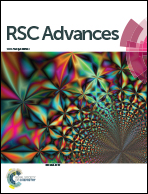Investigation of the tunable properties of graphene complementary terahertz metamaterials
Abstract
Based on the graphene–SiO2–Si structure, the tunable resonant properties of the complementary graphene metamaterials (MMs) have been investigated in the terahertz regime. The influence of operation frequency, the Fermi levels of the graphene layer, and different kinds of graphene patterns have been taken into account. The results manifest that the tunable mechanisms of the complementary graphene MMs structures mainly depend on the LC resonance. The resonant transmission and reflection properties of the complementary graphene MMs structures can be tuned over a wide range via controlling the applied electric fields. As the Fermi level of the graphene layer increases, the resonances of the MMs structure become stronger, and the resonant peaks of the transmission curves shift to the higher frequency, resulting from the permittivity of graphene layer increases in the THz regime. The transmission (reflection) spectrum is broad (sharp), which can be used to fabricate transmission modulators (reflection filters). The results are very helpful in the design of novel plasmonic devices and useful for the application of biomedical sensing and optical communications.


 Please wait while we load your content...
Please wait while we load your content...